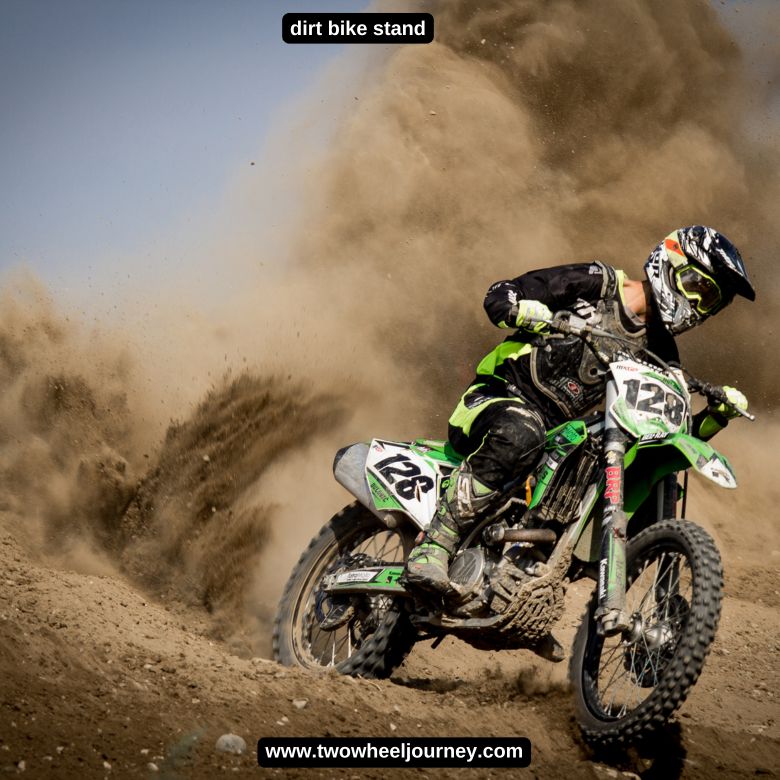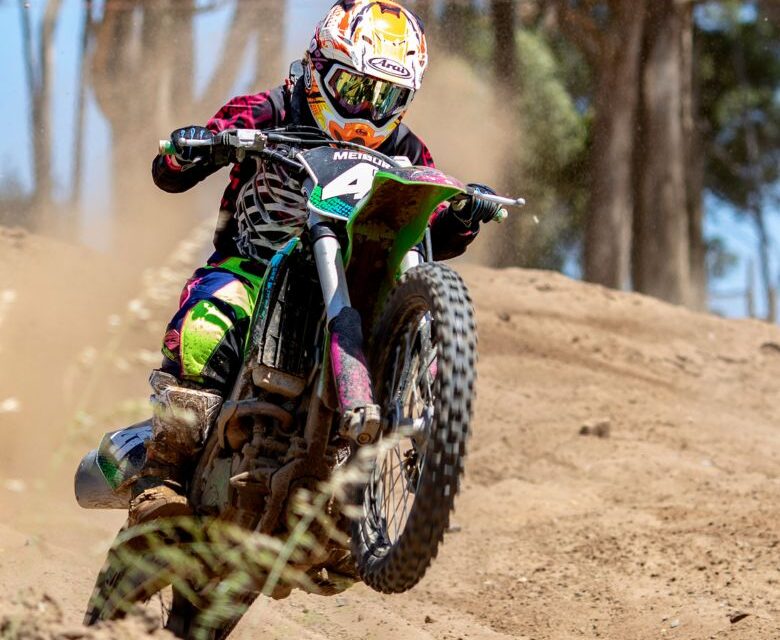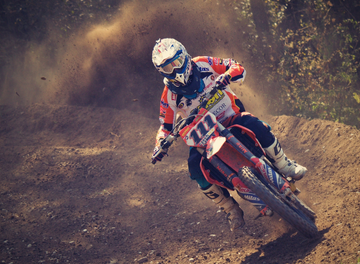A dirt bike stand is more than just a piece of equipment; it’s an essential tool for every rider who values the maintenance and care of their bike. Whether you’re an off-road enthusiast or a motocross racer, the proper stand ensures that your dirt bike is securely elevated, making it easier to perform routine maintenance, cleaning, and repairs. But choosing the right stand is not as simple as it might seem. With various types, materials, and features available, the decision requires careful consideration to match the specific needs of your bike and riding style.
A high-quality stand not only offers convenience but also adds an extra layer of safety, preventing accidents that could occur when working on a bike that isn’t properly supported. Investing in the right stand is about more than just functionality; it’s about prolonging the life of your dirt bike and ensuring that it’s always in peak condition, ready for the next thrilling ride. In the following sections, we’ll explore the key factors to consider when selecting a dirt stand, helping you make an informed decision that suits your needs and enhances your riding experience.
Stay Upright: A Comprehensive Guide to Dirt Bike Stand
In this comprehensive guide, we’ll explore the various types of bike stands, how to choose the right one, and why they’re essential for both amateur and professional riders. Whether you’re looking to buy your first stand or upgrade to something more durable, this guide will provide all the information you need.For more information visit here
Table of Contents
Understanding the Importance of a Dirt Bike Stand
A dirt bike serves multiple purposes, from facilitating repairs to providing a stable platform for storage. Here’s why you shouldn’t ride without one:
- Safety: A good stand ensures your bike remains upright and secure while you’re working on it. This is especially important when dealing with tasks like oil changes or tire replacements, where stability is key to avoiding accidents.
- Maintenance: Routine maintenance becomes easier with a bike stand. It elevates the bike, allowing you to access parts that would be difficult to reach otherwise, such as the chain, suspension, and undercarriage.
- Storage: Keeping your bike on a stand when not in use can prevent flat spots on tires, leaks, and other issues that can arise from prolonged contact with the ground.
Types of Dirt Bike Stands
When it comes to bike stands, one size does not fit all. The type of stand you choose should be based on your specific needs, the weight of your bike, and your maintenance routine. Below are the most common types:
a. Triangle Stand
Overview: Triangle stands are the most basic type of dirt bike stands. They are typically lightweight, portable, and easy to use. The stand’s simple design includes a three-sided metal piece that fits into the axle of the rear wheel, keeping the bike upright.
Pros:
- Inexpensive
- Lightweight and portable
- Simple to use
Cons:
- Limited stability compared to other stands
- Only supports the rear of the bike
- Not ideal for heavy maintenance tasks
Ideal For: Casual riders who need a simple solution for short-term storage.
b. Lift Stand
Overview: Lift stands offer more versatility and support than triangle stands. These stands come with a lever or hydraulic system that allows you to lift the entire bike off the ground, providing a stable platform for more extensive maintenance.
Pros:
- Provides full bike support
- Adjustable height
- Ideal for maintenance tasks
Cons:
- Bulkier and heavier
- More expensive than triangle stands
Ideal For: Riders who perform regular maintenance and need a sturdy, reliable stand.
c. Hydraulic Scissor Lift Stand
Overview: Hydraulic scissor lift stands take lift stands to the next level by incorporating a hydraulic system that allows you to raise and lower the bike with minimal effort. These stands are particularly useful for dirt bike stand or when performing detailed work.
Pros:
- Effortless lifting with hydraulic support
- Adjustable height
- Extremely stable
Cons:
- Expensive
- Requires more storage space
Ideal For: Professional riders or mechanics who frequently work on their bikes and need the best support available.
d. Fixed Stand
Overview: Fixed stands are a simple and durable option that supports the bike at a fixed height. These stands are typically constructed from solid materials like steel or aluminum and provide a stable platform for storage or basic maintenance.
Pros:
- Strong and durable
- Easy to use
- Affordable
Cons:
- Not adjustable
- Less convenient for maintenance tasks that require variable height
Ideal For: Riders looking for a sturdy, no-frills stand for long-term storage.

Choosing the Right Dirt Bike Stand
Selecting the right dirt stand depends on several factors, including the type of riding you do, the weight of your bike, and how often you perform maintenance. Here’s what you need to consider:
a. Bike Weight and Size
Different stands are designed to handle different weights and sizes. A stand that works well for a lightweight motocross bike might not be suitable for a heavier enduro bike. Always check the weight capacity of the stand and compare it with your bike’s specifications.
b. Maintenance Needs
If you regularly perform maintenance on your bike, a lift stand or hydraulic scissor lift stand might be the best choice. These stands provide the stability and height adjustment needed for detailed work.
c. Portability
For riders who frequently travel or need a stand for track days, portability is key. A triangle stand or a lightweight lift stand could be ideal for these situations, offering a balance between convenience and functionality.
d. Budget
Dirt bike stands range in price from budget-friendly triangle stands to high-end hydraulic scissor lift stands. Determine your budget and consider how much you’re willing to invest in a stand. Remember that a higher-quality stand can save you money in the long run by preventing potential damage to your bike.
e. Durability and Material
The material of the stand plays a crucial role in its durability. Steel stands are strong and durable but heavier, while aluminum stands offer a lighter option without sacrificing too much strength. Choose a material that fits your needs and riding environment.
Top Dirt Bike Stand Brands to Consider
When it comes to quality, some brands stand out in the dirt bike stand market. Here are a few trusted names:
a. Matrix Concepts
Matrix Concepts is known for its innovative and high-quality dirt bike stands. Their stands are used by professional motocross teams and offer excellent durability and functionality.
b. Risk Racing
Risk Racing offers a range of stands, from basic triangle stands to advanced lift stands. Their products are known for their thoughtful design and reliability.
c. Pit Posse
Pit Posse specializes in dirt bike accessories, including a wide variety of stands. Their products are popular for their affordability and solid construction.
d. BikeMaster
BikeMaster provides a selection of lift stands and fixed stands that cater to different needs and budgets. They are known for their sturdy construction and ease of use.
How to Properly Use a Dirt Bike Stand
Usin stand might seem straightforward, but improper usage can lead to accidents or damage to your bike. Here’s a step-by-step guide to ensure you’re using your stand safely and effectively:
a. Positioning the Stand
- Place the Stand on a Flat Surface: Ensure that the ground or floor is flat and stable to prevent the stand from tipping over.
- Align the Stand with the Bike: For triangle stands, position the dirt bike stand so the rear axle is aligned with the stand. For lift or hydraulic stands, align the bike’s frame with the lift platform.
b. Lifting the Bike
- Secure the Bike: If using a lift or hydraulic stand, secure the bike by placing the stand under the bike’s frame or skid plate.
- Lift Slowly: Use the lever or hydraulic mechanism to lift the dirt bike stand slowly. Make sure the bike is balanced and that both wheels are off the ground.
- Double-Check Stability: Before you start working on the bike, double-check that it is stable and secure on the stand.
c. Lowering the Bike
- Release the Lift Mechanism: Slowly release the lever or hydraulic mechanism to lower the bike back to the ground.
- Remove the Stand: Once the bike is on the ground, carefully remove the stand and ensure that the bike is stable on its tires.
Maintaining Your Dirt Bike Stand
A dirt bike stand is an investment, and proper care will ensure it lasts for years. Here’s how to maintain your stand:
a. Regular Cleaning
Keep the stand clean by wiping it down after use, especially if it’s been exposed to dirt, mud, or moisture. This will prevent rust and keep the moving parts functioning smoothly.
b. Lubrication
If your stand has moving parts, such as a hydraulic lift or a lever mechanism, regularly lubricate these parts to prevent them from seizing up.
c. Inspect for Damage
Periodically inspect your stand for any signs of wear and tear, such as cracks, bends, or loose bolts. Address any issues immediately to prevent accidents.
d. Proper Storage
When not in use, store your stand in a dry, cool place to prevent rust and deterioration. If the stand is foldable, consider storing it in its folded position to save space.
Common Mistakes to Avoid When Using a Dirt Bike Stand
Even experienced riders can make mistakes when using a dirt stand. Here are some common pitfalls to avoid:
a. Using the Wrong Stand for Your Bike
Ensure the stand you’re using is appropriate for the weight and size of your dirt bike stand. Using an under-rated stand can lead to instability and potential accidents.
b. Improper Positioning
Always make sure the stand is positioned correctly under the bike. Misalignment can cause the bike to tip over or slip off the stand.
c. Ignoring the Stand’s Weight Limit
Every stand has a weight limit. Exceeding this limit can cause the stand to collapse, leading to damage to your bike or injury to yourself.
d. Neglecting Maintenance
A poorly maintained stand can fail at the worst possible moment. Regularly check and maintain your stand to ensure it’s always ready for use.
Advanced Features in Dirt Bike Stands
Modern bike stands come with a variety of advanced features that enhance their functionality and convenience. Here’s a look at some of these features:
a. Adjustable Height
Feature: Many lift and scissor stands come with adjustable height settings. This allows you to customize the height of the stand to suit different maintenance tasks.
Benefits:
- Versatility: Enables the stand to be used for various types of work, from changing tires to adjusting the suspension.
- Comfort: Reduces the need to bend over or kneel, making maintenance tasks more comfortable.
b. Rubberized Surfaces
Feature: Some stands come with rubberized or padded surfaces where the dirt bike stand. This helps protect the bike’s frame from scratches and prevents slippage.
Benefits:
- Protection: Guards against damage to the bike’s paint and frame.
- Stability: Enhances grip, keeping the bike securely in place.
c. Built-in Tool Storage
Feature: Certain stands include built-in tool storage or trays where you can keep your tools and parts.
Benefits:
- Convenience: Keeps essential tools within reach during maintenance.
- Organization: Helps keep your workspace tidy and efficient.
d. Collapsible Designs
Feature: For those with limited storage space, collapsible or foldable stands are available. These can be compacted for easy storage when not in use.
Benefits:
- Portability: Easier to transport and store, making them ideal for riders who travel or have limited garage space.
- Space-saving: Reduces clutter in your workspace.
Maintenance Tips for Dirt Bike Stands
Proper care of your bike stand ensures longevity and reliable performance. Here’s how to keep your dirt bike standstand in top shape:
a. Regular Inspection
Tip: Periodically check for signs of wear, such as rust, bent parts, or loose bolts. Address any issues immediately to avoid potential failure.
How-To:
- Inspect the Frame: Look for cracks or dents.
- Check Moving Parts: Ensure that hydraulic lifts and levers are functioning smoothly.
b. Cleaning and Lubrication
Tip: Keep your stand clean and lubricated to prevent rust and ensure smooth operation.
How-To:
- Clean the Stand: Wipe down the stand with a damp cloth to remove dirt and debris. For stubborn grime, use a mild detergent.
- Lubricate Moving Parts: Apply lubricant to hinges, lift mechanisms, and any other moving parts.
c. Storing the Stand
Tip: Store your stand in a dry, cool place to prevent rust and corrosion.
How-To:
- Avoid Moisture: Keep the stand away from areas prone to moisture.
- Cover If Necessary: Use a cover if storing the stand outdoors or in a damp environment.
Choosing the Right Stand for Different Riding Conditions
Different riding conditions may require specific types of stands. Here’s a guide to choosing the right stand based on your riding environment:
a. Off-Road and Trail Riding
Recommendation: A lightweight, portable stand such as a triangle stand or a foldable lift stand can be ideal.
Reason:
- Portability: Easy to transport and set up in various locations.
- Durability: Should be robust enough to handle rough conditions.
b. Motocross and Racing
Recommendation: A hydraulic scissor lift stand or a high-quality lift stand with adjustable height is preferred.
Reason:
- Stability: Provides solid support for high-performance bikes.
- Ease of Use: Allows for quick adjustments and easy maintenance between races.
c. Long-Term Storage
Recommendation: A fixed stand or a heavy-duty lift stand is suitable for long-term storage.
Reason:
- Sturdy Support: Ensures the bike remains in a stable position for extended periods.
- Protection: Prevents flat spots and other issues that can arise from prolonged contact with the ground.
DIY and Custom Dirt Bike Stands
For those who enjoy DIY projects or need a stand tailored to specific needs, building your own dirt bike stand can be a rewarding endeavor.
a. Materials Needed
- Steel or Aluminum Tubing: For a durable frame.
- Rubber Pads: To protect the bike and prevent slippage.
- Welding Equipment: For assembling the frame.
b. Design Considerations
- Height Adjustability: Incorporate mechanisms for height adjustment if needed.
- Stability: Ensure the design provides a wide and stable base to prevent tipping.
- Ease of Use: Make sure the stand is easy to maneuver and position.
To sum up
An essential gear that makes maintenance easier overall and increases your bike’s lifetime, safety, and convenience is a dirt bike stand. Your bike will always be in top shape and ready for rides if you know what stands work best for it, what characteristics it has, and how to use and maintain it. A well-made stand will pay for itself in terms of performance and peace of mind, whether you go for a straightforward triangular stand or an intricate hydraulic lift. Upkeep and repair of your dirt bike can become easier and more pleasurable with the correct stand. In order to prepare your dirt bike for your next journey, make sure it is equipped with the appropriate stand.










